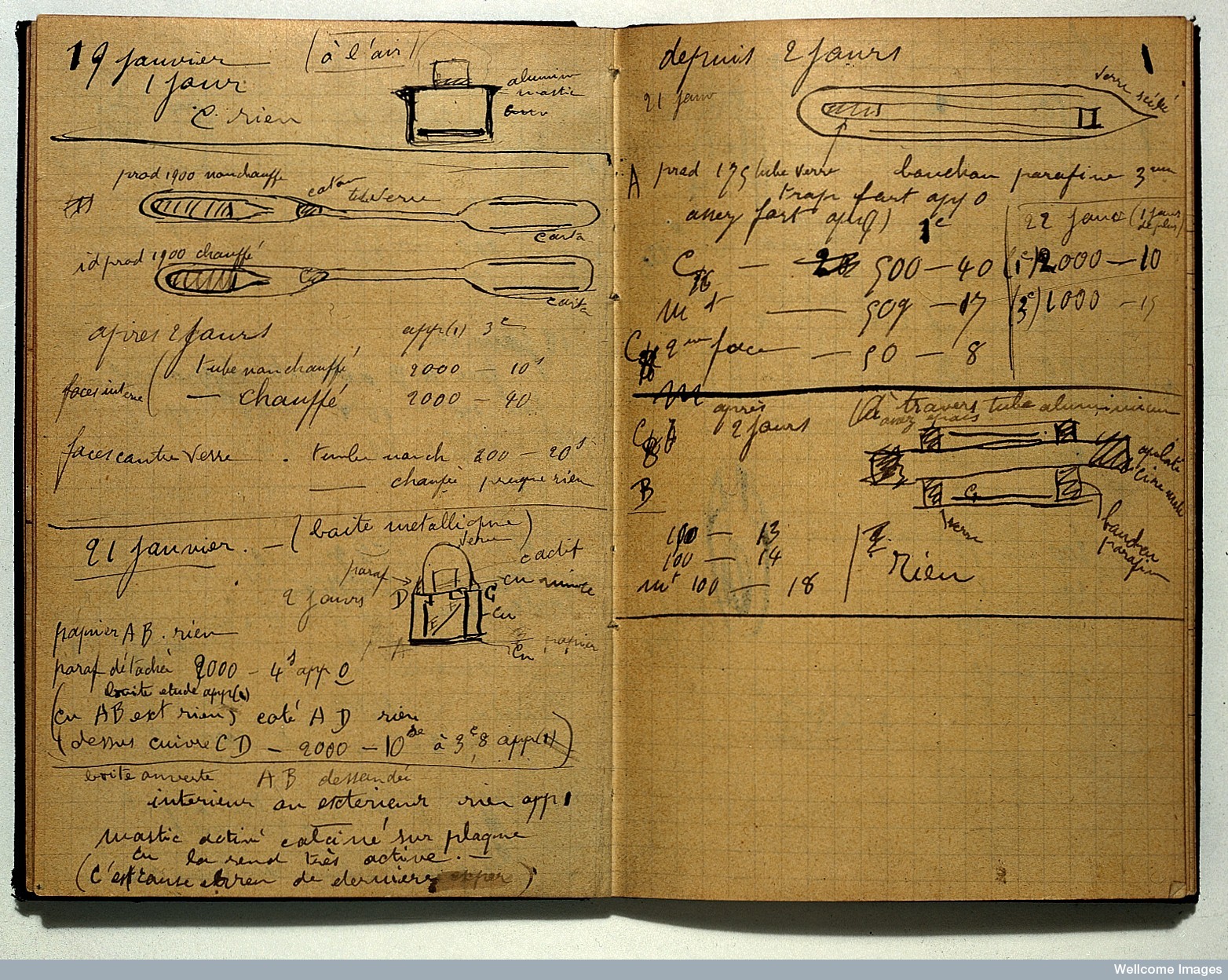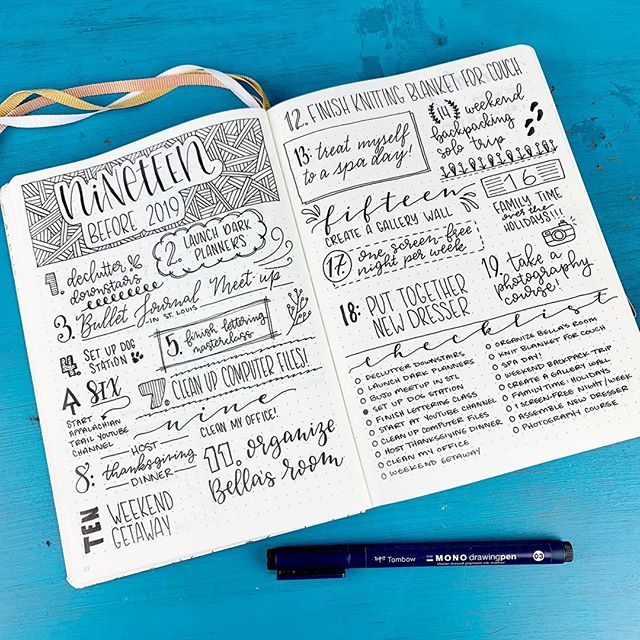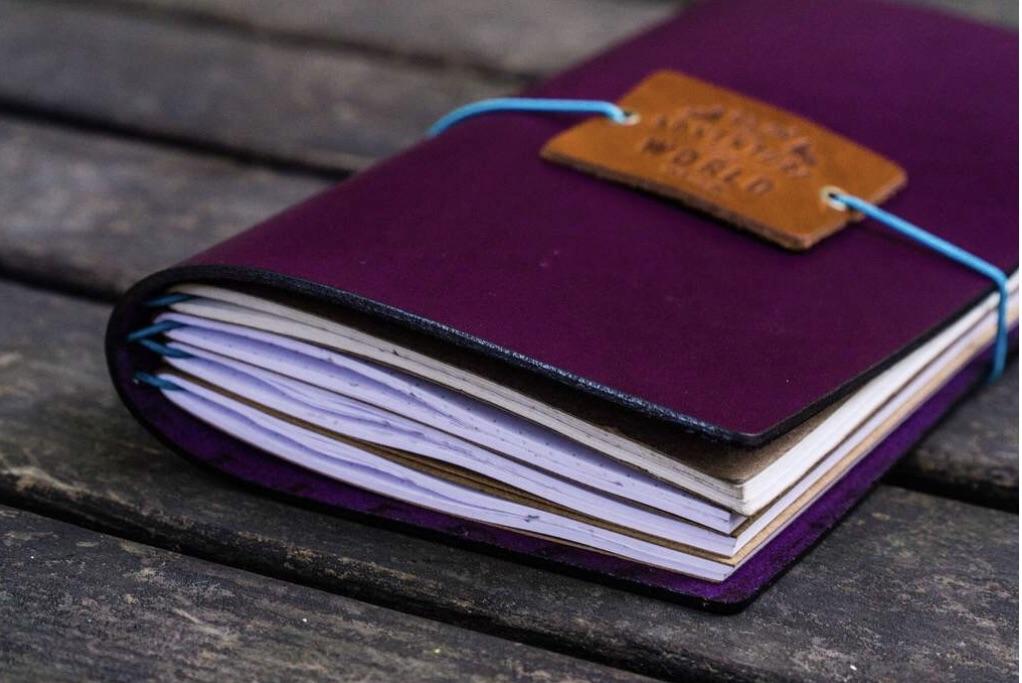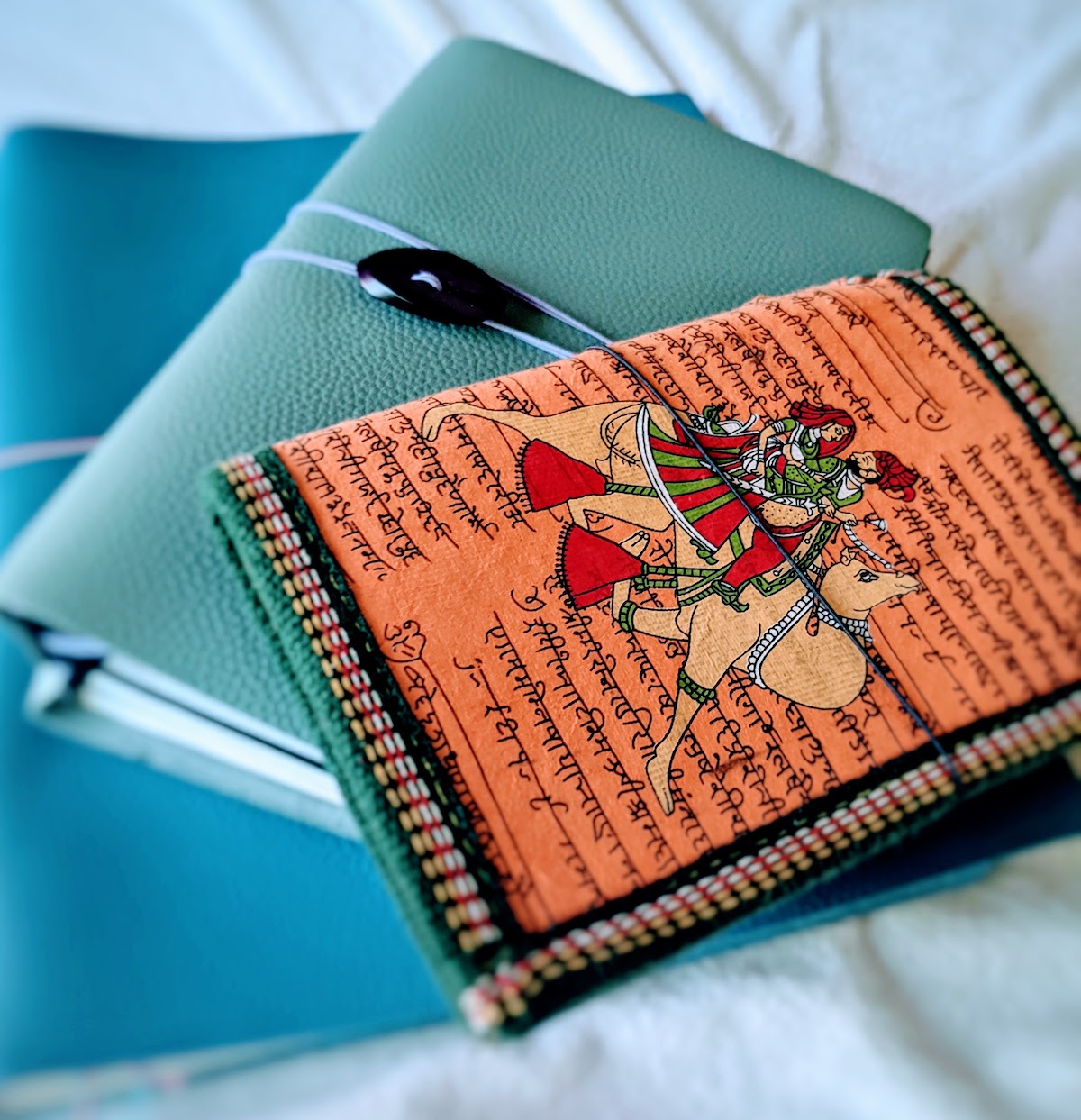Week 18 - On Journals
This issue is all about journals. As someone who has been journaling on and off for about 15 years, this is an unpoetic, link-filled ode to journaling.
Here are the sections:
- What is a journal?
- Who journals?
- What do you write about in journals?
- Is journaling for everyone? It seems mostly the artistic and creative types keep journals...
- Ok, I think I want to try this. What do you recommend?
- A look into Morning Pages
- Bullet Journaling with GTD
- What is a travelers journal?
- What is a travelers journal used for?
- DIY traveler's journal
- My Travelers Journals
- Write to me
“I write entirely to find out what I'm thinking, what I'm looking at, what I see and what it means. What I want and what I fear.”
- Joan Didian
1. What is a journal?
It's just a book where you write and draw - an intimate, private and enlightening conversation between you and yourself, for one's own benefit. To write in a journal is like taking a deep deep calming breath to center yourself - only this one centers, clears your mind, shows you your options and highlights the way ahead.
When I say 'journaling', I mean this analog activity - real pen on real paper - not the digital version of it.
The texture of paper, the smell of the ink, the sound of friction as marks appear on paper, the meditative repetitive movement of your hand transferring out thoughts you didn't know you had in your mind - journaling incorporates all your senses and enriches you. Add to it, the act of looking at your sheet and staring off into the distance every now and then, while you catch your thoughts of sipping a nice beverage, of peace and quiet and solitude wherever you are, found in your thoughts, you write.
If you are not convinced, then here are some more links on why writing longhand is good for you.
Marie Curie's radioactive journals, stored in lead-lined boxes, have a half-life of 1600 years!
2. Who journals?
According to Quartz, the world's most successful people journal. You will feel kinship with the likes of
- Oprah Winfrey
- Virginia Woolf
- Susan Sontag
- Marie Curie
- Charlie Munger
- Benjamin Franklin
- Charles Darwin
- Anne Frank
- Peter Drucker
- Leonardo Da Vinci
- Albert Einstein
- Thomas Edison
- Marcus Aurelius.
Mere facts and names and dates communicate more than we suspect.
— Henry David Thoreau
3. What do you write about in journals?
- They record, analyze, process what happens to you on a day to day basis, your thoughts, your feelings, wishes, dreams - the diary that we know of.
- they brainstorm solutions for their problems.
- They do some imaginative writing
- They write down interesting bits and bobs that you find - like quotes, poetry, beautiful language, ideas - also known as a Commonplace book
- They plan their day / week / month / life / birthday / anniversary / end-of-the-world party... (Bullet journals, planners)
- They clean out their brain. (morning pages, stream of consciousness writing )
Journaling is a very tactile way of making sense of the world, our place in it, the people around us, how we live, how we want to live. It is a very obvious way to heed the old Greek call to "Know Thyself", and to keep knowing yourself as you change and evolve and grow.
A pretty decorative journal page by Boho Berry
4. Is journaling for everyone? It seems mostly the artistic and creative types keep journals..
Here are some links on how different types of people journal
- Athletes - https://www.outsideonline.com/2407617/why-you-should-journal
- Business - https://www.entrepreneur.com/article/343680
- Business - https://www.fastcompany.com/90423383/the-benefits-of-journaling-for-leaders
Depending on how you think, and how you identify yourself as, there are very many different kinds of journals out there. And you can always move from one type to the other as you explore journaling kinds - and then mash it all up to your kind of journal.
What sort of diary should I like mine to be? Something loose knit and yet not slovenly, so elastic that it will embrace anything, solemn, slight or beautiful that comes into my mind. I should like it to resemble some deep old desk, or capacious hold-all, in which one flings a mass of odds and ends without looking them through. I should like to come back, after a year or two, and find that the collection had sorted itself and refined itself and coalesced, as such deposits so mysteriously do, into a mould, transparent enough to reflect the light of our life, and yet steady, tranquil compounds with the aloofness of a work of art.
— Virginia Woolf, in her diary, April 20, 1919
5. OK. I think I want to try this. What do you recommend?
I recommend starting with a bullet journal. The easiest for most of us is to start with daily to-do lists. Then to add on some observations of our days - personal, work related, fantasies. Ideas, insights, revelations, more tasks which pop up in mind - all go in the journal.
Here are the steps I suggest - a mongrel version of the bullet journal system.
- Get a notebook and a pen or pencil. (any kind)
- Decide what time of day you plan to write your journal (morning with coffee / night before bed /etc). And decide what cadence. I recommend starting with every day, and then changing it up as you need it.
- Title the first two pages as "Index".
- Every page you write, write the date.
- Number the pages as you go.
- Write doodle and draw everyday - todo lists, quotes, observations, notes,reminders, ideas ...
- Update the index with the title of the page and the page number. You can index everything at first, and then get rid of the ones that make no sense to you as you go along.
- And change it as you need it to. Make it more complicated, beautiful or minimal per your aesthetic and time commitment.
You can of course, read a lot of articles, and watch a lot of videos on how people journal and set-up their journals. However, be aware that a lot of people decorate the heck out of their journal, and if that isn't your aesthetic (like it isn't mine)it can be overwhelming and disheartening.
For the non-decorative journalers, here is a great video to get started: Composition Notebook bullet journal system
6. A look into Morning Pages
I first learned about Morning Pages in Julia Cameron's "The Artist's Way" about 10 years ago. Since then, it has been on-off a part of my life. It has helped me so much that I've gifted this book more than any other book so far. So what exactly are morning pages?
“ Morning Pages are three pages of longhand, stream of consciousness writing, done first thing in the morning.There is no wrong way to do Morning Pages – they are not high art. They are not even “writing.” They are about anything and everything that crosses your mind– and they are for your eyes only. Morning Pages provoke, clarify, comfort, cajole, prioritize and synchronize the day at hand. Do not over-think Morning Pages: just put three pages of anything on the page...and then do three more pages tomorrow. ”
Morning pages are one thing I recommend you give a try. It takes time, and takes about a month or so to have a visible effect on your mental processes.
In the journal I do not just express myself more openly than I could to any person; I create myself. The journal is a vehicle for my sense of selfhood. It represents me as emotionally and spiritually independent. Therefore (alas) it does not simply record my actual, daily life but rather—in many cases—offers an alternative to it.
— Susan Sontag
7. Bullet Journaling with GTD.
If you are interested in the cult of productivity, or if you have struggled with juggling multiple projects at a time, you must have come across David Allen's "Getting Things Done". Well, turns out a franken-hybrid of Bullet Journaling + Getting Things Done is really amazing.
And here is a setup video : GTD based project planning in bullet journals
But then, if you start building monsters, why stop at the Bullet Journal + GTD mashup? Why not add the "commonplace" and "morning pages" along with the two? And that is exactly what I do:
- Notebook 1 : A hybrid of the bullet journal + common place book + weekly and daily planning + morning pages
- Notebook 2: The "ToDO factory" - a giant list of all todos
- Notebook 3: The master project book which has all my projects, steps, experiments, observations, and project goals.
I use a travelers journal to keep all these notebooks together. And, here's a link about How I(the author) bullet Journal in a traveler's notebook
8. What is a travelers journal?
A Traveler’s Notebook is a book-like cover, originally made of leather, that holds more than one smaller notebooks or inserts with elastic bands. Basically a collection of your notebooks which live together, but which can be removed, moved around or replaced easily. Talk about loosely coupled and highly aligned.
9. What is a travelers journal used for?
People use travelers notebooks for many many reasons, like:
- As a Daily Journal
- For Planning
- Everyday organizer
- As a Travel Journal
- For work stuff
- Bullet journal
- For writing stuff
- Fun and Functional List Making
- Habit Tracking and Reinforcing
- Keeping Track of Big Projects
- Wedding or Party Guest Books
- Doodling and Zentangling
- Memory Keeping
- Collecting Inspirational Quotes
- Scrap booking
"It’s an odd idea for someone like me to keep a diary; not only because I have never done so before, but because it seems to me that neither I — nor for that matter anyone else — will be interested in the unbosomings of a 13-year-old schoolgirl. Still, what does that matter? I want to write, but more than that, I want to bring out all kinds of things that lie buried deep in my heart."
— Anne Frank, The Diary of Anne Frank
10. DIY travelers journal
The 'original' travelers journal was/is made by a company called Midori, now rebranded as The Travellers Company. Today, a lot of companies make them out of all kinds of materials - leather like the original one, cardboard, fabric ... you name it. More importantly, for me, there is a huge DIY community of people making 'Fauxdori's and 'Fabricdoris'.
If you want to jump into the rabbit-hole with me, here are a bunch of links:
- 6 DIY MIDORI TRAVELER’S NOTEBOOK COVERS TUTORIALS
An article with links to other videos, articles on how to make your own fauxdori with different materials. - DIY Bullet Journal | Traveler's Notebook Style on youtube
On how to make your own inserts as well as the travelers notebook - DIY Leather Traveler’s Notebook Cover with a Pocket
An in-depth (meaning long with lot of information) on how to make your own leather travelers journal. I loved the way the maker laced the elastic. - Vintage Book to Midori Fauxdori Travelers Notebook
How to convert an old book cover to a travelers journal.
My DIY travelers notebooks.
11. My Travelers Journals
And so here, are the travelers journals I've made and use. I made one from dark blue leather in a B5 size - that holds large graph notebooks. This is the one which holds composition books, the "Big Book of Projects". I made and use another one in size A5 - a regular journal size. This is my main daily workhorse set of journals. And the orange pretty one used to be a cover of a handmade paper notebook which I used up. This one holds a pocket notebook, which I can carry around everywhere! Materials used:
- Pre-cut leather journal piece from The Leather Guy
- Elastic cords from Michaels
- Japanese-style screw punch by Bira from Amazon
12. Write to me
I would love to hear from you all. Do you write in journals? Have you ever written? Why did you stop? Do you think you will start again? Any interesting articles/videos/thoughts to share? Any DIY things I should be looking at making?
Written on June 21, 2020.
This was Issue #18 of the Year of the Turtle. You can see all the past newsletters on this website.
The fonts used here are from David Jonathan Ross' Font of the Month Club
- Gimlet XRay - January 2020
- Dattilo DJR - March 2020
- Roslindale Deck - April 2020
- Roslindale Text - November 2017




